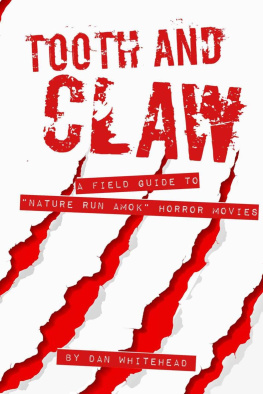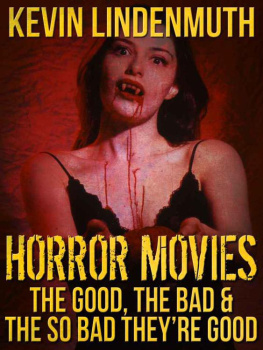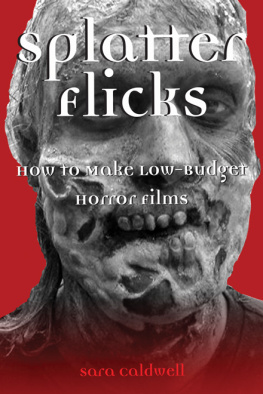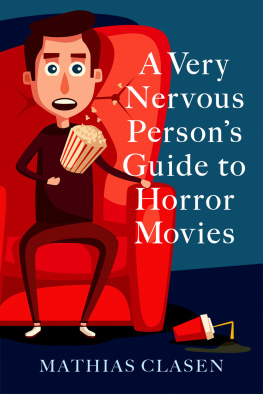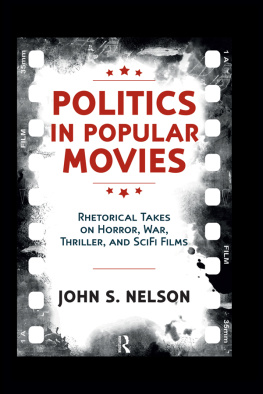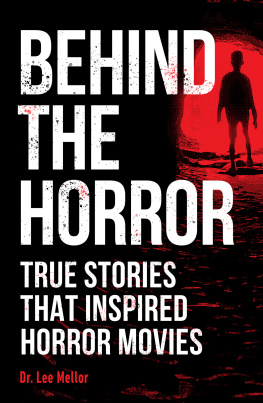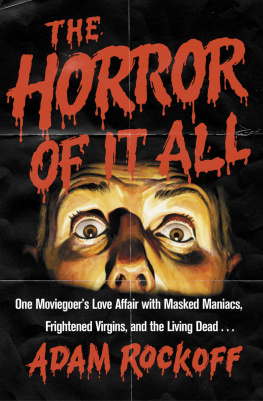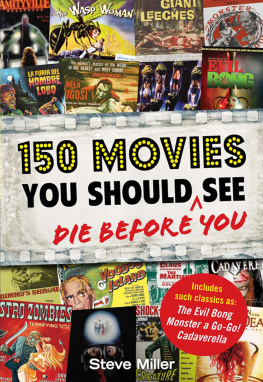TOOTH AND CLAW
A Field Guide To Nature Run Amok
Horror Movies
INTRODUCTION
The very first horror stories ever told were about animals. Whether painted on cave walls or shared around a fire, our primitive ancestors first learned mortal fear from the predatory beasts that shared their domain. Such tales spoke to our need for survival, rather than entertainment.
But as time went on, we slowly but surely cut ourselves off from the natural world and removed ourselves from the cycle of hunter and hunted. Safe behind walls of glass and stone, we may have been able to separate ourselves from the Darwinian struggle, but those primal lessons still scratch away inside our DNA, a flight or fight reflex that we choose to provoke by subjecting ourselves to scary stories rather than actual peril.
It's no surprise, then, that the animal kingdom looms large in the popular horror culture. Ephemeral phantoms, undead ghouls and masked maniacs can be safely set aside from real life. The threat posed by the beasts around us, however, remains worryingly plausible. Few of us have been pursued around a summer camp by a hockey-masked killer, but we've all encountered an animal that for a brief moment reminded us what it was like to be just another creature fighting for survival.
Take away our buildings and technology, and we're still just meat. That truth is never far from the surface, and every now and then it's good to be reminded that, once you strip away the trappings of modern life, our place on the food chain isn't as secure as we like to tell ourselves.
That's where movies come in, of course, and film was quick to seize on our fascination and fear as a way to lure in the crowds. From the early safari flicks through to modern blockbusters, killer animals are a reliable fixture.
Not only do such creatures serve to remind us of the thin wall that keeps us apart from the herd, they also reflect our all-too-human concerns and prejudices. In the 1920s and 1930s, at the birth of cinema, it was the lingering colonial fear of savage lands beyond our borders that drove audiences to scream and squirm at rampaging lions and terrible apes. In the post-war period, with the nuclear genie released from its bottle, it was the impact of atomic radiation that led us to cower from mutated insects the size of freight trains, reflecting our hubris back at ourselves. At least in the atomic age monster movies you could rely on idealistic scientists and square-jawed soldiers to solve the problems they created.
By the 1970s, even that reassuring dynamic had faltered, worn away by grueling images from Vietnam and the disillusionment of Watergate. Now when the natural world turned against us, the blame fell on all of us, as pollution and the detritus from our consumption-crazed society turned the planet against us, one animal at a time or all at once. The authority figures could no longer be relied upon to save us, portrayed instead as ruthless politicians more interested in preserving their own image and happy to sacrifice lives rather than anger the almighty god of Tourist Season.
And so it continues today, with a fresh flood of postmodern, ironic monster movies in which desperate has-beens offer themselves up to cheaply created digital sharks, snakes and crocodiles in the hope of earning our sympathy or at least a few moments of attention before their career sputters out.
Call it nature run amok or eco-horror, but the animal attack genre has created some of the best movies ever made and some of the absolute worst. It echoes our most primal fears of a world we hold at arms length, and says much about how we view ourselves in the process.
This book is your field guide to the menagerie of real world beasts that have stalked us across the years, across land, sea and air, across screens both big and small. Enjoy.
Dan Whitehead
November 2012
AQUATIC AGGRESSORS

Just when you thought it
was safe to go into the water...
THE SEA BAT (1930)
Directors: Wesley Ruggles, Lionel Barrymore
Stars: Raquel Torres, Charles Bickford, Nils Asther
A giant manta ray causes problems for the natives of Portuga, while the headstrong daughter of the mayor falls for an escaped convict disguised as a priest.
One of the earliest movies to use a killer animal as its central plot thread, this stiff but enjoyable talkie still retains a lot of the wide-eyed melodrama of the silent era. The manta ray itself swims in and out of the story, often making way for the tissue-thin romance between the feisty local girl (former Marx Brothers romantic foil Raquel Torres) and the brute with a heart of gold who wins her over mostly by deciding she's not worth beating some sense into. All the while, servile black extras smile and bow and jig dementedly around ceremonial fires. Dubious sexual and racial politics aside, this is a colorful adventure even in black and white and the manta ray itself is an amazingly accomplished piece of special effects work, considering the vintage. It swims and leaps and demolishes boats with surprising enthusiasm. Sadly, it also exits the story with no closure whatsoever having led our lovers into each others arms, the end credits bring things to a close with the question of the man-eating fish maddeningly unresolved. Of course, the equally pressing question of the male lead being an escaped convict also remains in the air. He vows to return to pay penance for whatever he did wrong, while his girl promises to wait for him.
Trivia: Wesley Ruggles was removed from the director's chair during production. His replacement was the legendary Lionel Barrymore. Keep your eyes on the cast of leering sailors who provide most of the narrative flavor as well. One of them is a young Boris Karloff, still several years from finding fame as Frankenstein's monster.
DEVIL MONSTER (1946)
Director: S. Edwin Graham
Stars: Barry Norton, Blanche Mehaffey, Jack Del Rio
A fishing vessel sets out to bring back a lost crew member, but he resents being found and steers the ship into a battle against a giant manta ray.
A clunky patchwork screen filler, spliced together using lots of scenes from the 1936 movie The Sea Fiend, padded out with additional stock wildlife footage and other scraps, Devil Monster is as episodic and unsatisfying as you'd expect. If you're watching for the giant manta ray, you might as well skip to the last ten minutes as that's when it finally shows up. All you'll miss is some stodgy melodrama, topless native girls, lengthy sequences of sea lions cavorting and underwater shots of a moray eel wrestling an octopus. The manta itself is partly brought to life using real footage, but also a rigid puppet on a string. For shots where the actors need to be seen fighting it, a crude matte effect is used which renders everyone transparent. There's a certain old world charm to early stitched-together potboilers like this, but as a movie in its own right it's pretty dire.
PORT SINISTER (1953)
Director: Harold Daniels
Stars: James Warren, Lynne Roberts, Paul Cavanagh
An ancient island rises from the ocean, bearing a legend of pirate gold. Scientists and criminals race to be first on the scene but a colony of giant crabs stands in their way.
Running a little over an hour, and with stiff monochrome photography, Port Sinister or Beast of Paradise Isle as it's also known looks and feels like it's from the 1940s, not the start of the atomic age of monster movies. Despite the pulpy premise, it's a tedious effort, its minimal budget forcing it to abandon any ideas that might prove impressive and therefore expensive. The crabs make some fleeting appearances as half-decent puppets, but do little to create fear or tension. By the end, the story falls back on typical cliffhanger scenarios as the island sinks beneath the waves, taking the bad guys with it. Roger Corman would deliver on the giant crab concept far more enjoyably a few years later in Attack of the Crab Monsters.
Next page
